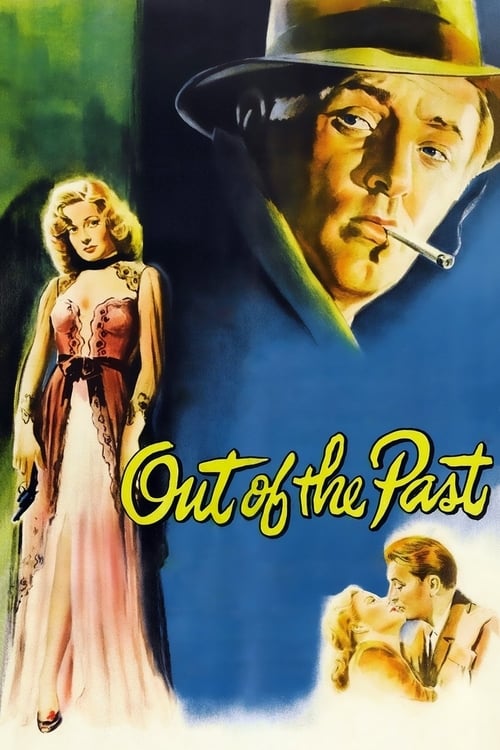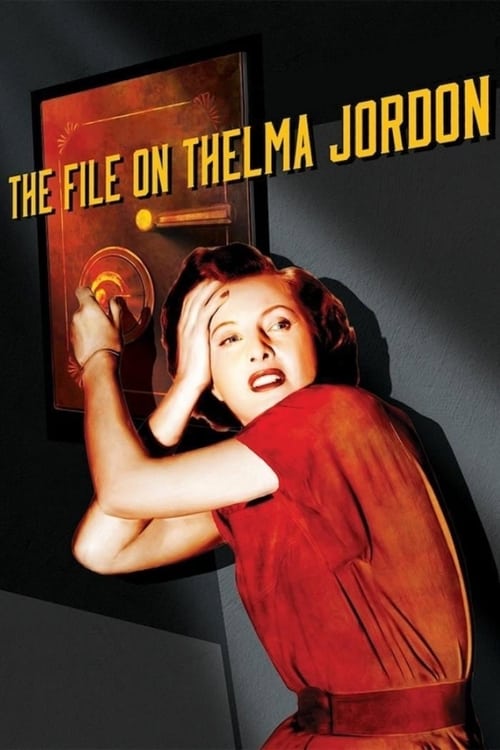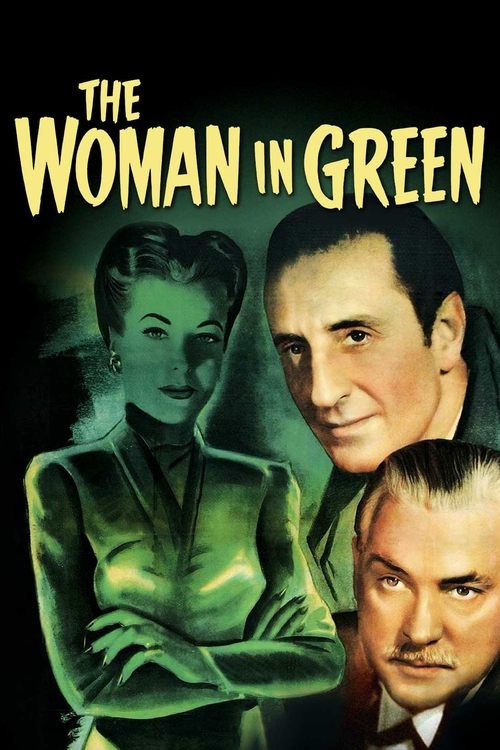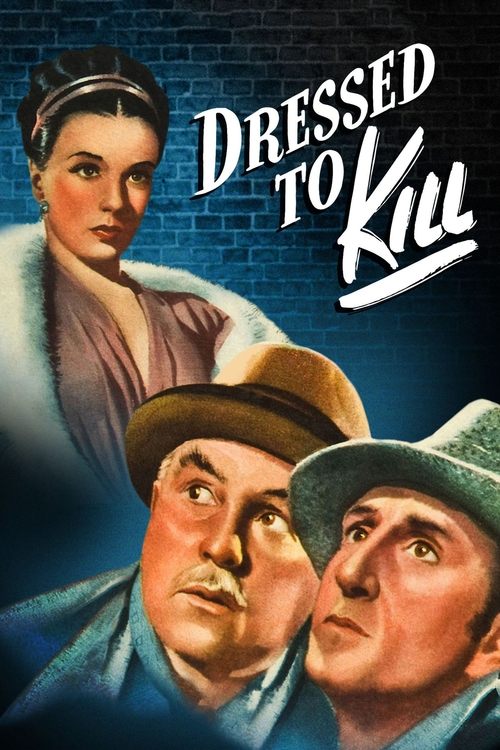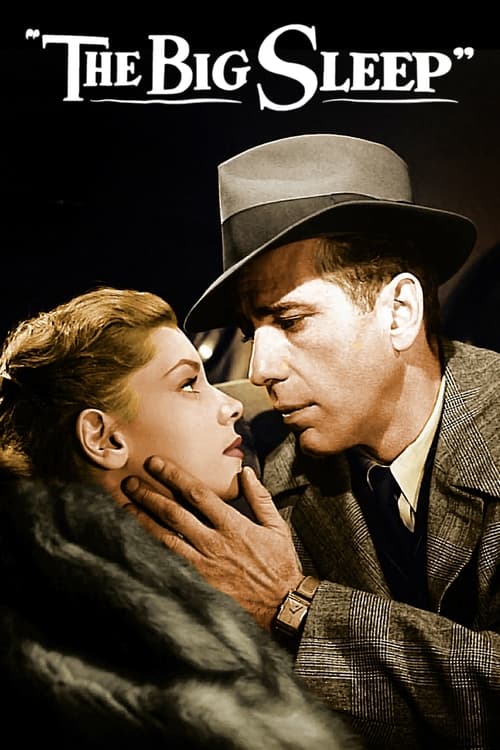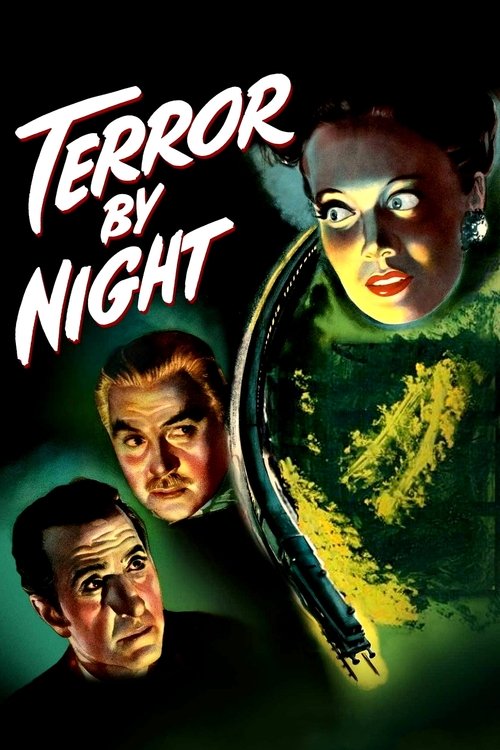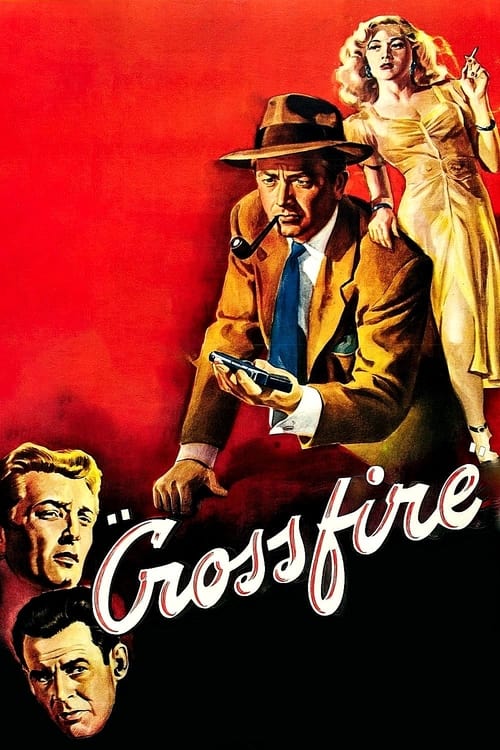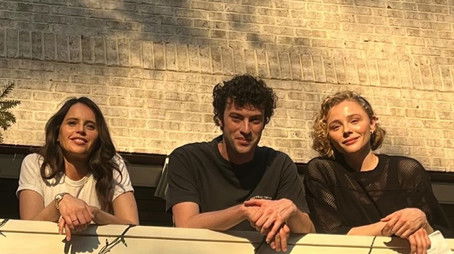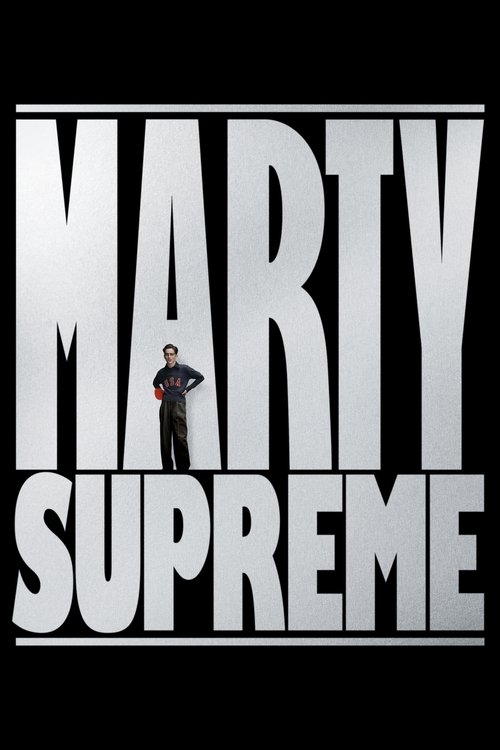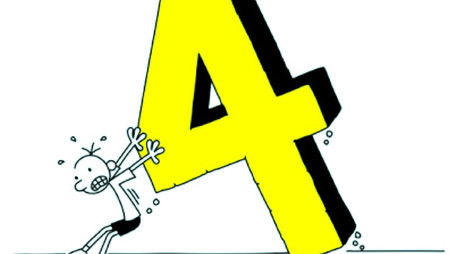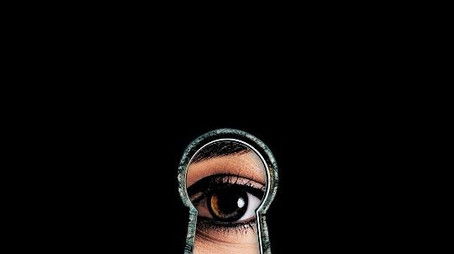
Ask Your Own Question
What is the plot?
The sun casts a warm glow over the small town of Bridgeport, California, where Jeff Bailey, a former private investigator, has attempted to escape his troubled past by running a quiet filling station. Jeff's life is simple, yet he is haunted by the shadows of his previous life. His new love interest, Ann Miller, represents a chance at redemption and a fresh start. However, this tranquility is disrupted when Joe Stefanos, a menacing figure from Jeff's past, arrives in town. Joe is a henchman for the powerful gangster Whit Sterling, who has a score to settle with Jeff.
As Jeff is summoned to meet Whit at his lavish Lake Tahoe lodge, he begins to recount his story to Ann during their all-night drive. Jeff's past is a complex web of deceit and betrayal, starting with his hiring by Whit to track down Kathie Moffat, Whit's former mistress who had allegedly shot him and stolen $40,000. Jeff's search leads him to Acapulco, Mexico, where he finds Kathie in a picturesque setting that contrasts sharply with the dark world he knows.
Jeff and Kathie's encounter is transformative. Despite being hired to bring her back, Jeff becomes enamored with Kathie's charm and beauty. She denies taking Whit's money, and they decide to run away together, leaving behind the danger and complications of their past. They settle in San Francisco, living discreetly at first but gradually becoming more comfortable in their new life.
However, their peace is short-lived. Fisher, Jeff's former partner, now working for Whit, spots Jeff at a race track. Fisher follows them to a remote cabin, where he attempts to blackmail them for the $40,000. Kathie, in a moment of desperation, kills Fisher during a brawl. She leaves Jeff behind, and he discovers a bank book revealing that she had indeed stolen Whit's money. This betrayal marks the end of their relationship, and Jeff returns to his simple life in Bridgeport.
Back in the present, Jeff and Ann arrive at Whit's lodge, where Jeff is surprised to find Kathie living with Whit. Whit proposes one final job to Jeff: to retrieve incriminating tax records from Leonard Eels, a crooked accountant in San Francisco. Jeff agrees, but he suspects he is being framed. At Eels' apartment, Jeff finds himself in a dangerous situation, and after a tense encounter, he discovers Eels dead. Jeff hides the body, further entangling himself in the web of deceit.
As Jeff navigates this complex situation, he realizes that Whit and his accomplice, Meta Carson, are setting him up for Eels' murder. Jeff confronts Kathie, who claims she had no choice but to return to Whit. However, her true intentions remain unclear, and Jeff is wary of her manipulations.
In a final confrontation, Kathie kills Whit in a desperate bid to escape with Jeff. She proposes fleeing to South America, but Jeff secretly informs the police of their plan. Pretending to go along with Kathie's escape, Jeff drives her away in Whit's car, leading them into a police ambush.
Cornered by the police, Kathie shoots Jeff, killing him instantly. In return fire, the police shoot Kathie dead. The film ends with Ann learning of Jeff's tragic death, devastated but comforted by the knowledge that Jeff intended to return to her, though his past ultimately made that impossible. The Kid, Jeff's mute assistant, seems to convey a message to Ann, but its meaning is left ambiguous, leaving the audience with a sense of moral murkiness and the inevitability of fate in the world of film noir.
What is the ending?
In the ending of "Out of the Past," Jeff Bailey confronts his past and the consequences of his choices. After a tense confrontation with Kathie Moffat and the men pursuing him, Jeff ultimately meets his demise, shot by the very people he tried to escape. Kathie, who has manipulated events throughout the film, is left to face the fallout of her actions.
As the film approaches its climax, Jeff Bailey, played by Robert Mitchum, finds himself cornered in a secluded cabin. The atmosphere is thick with tension, the shadows of the trees outside casting ominous shapes against the walls. Jeff, weary and burdened by the weight of his past, knows that the confrontation with Kathie Moffat, portrayed by Jane Greer, is inevitable. He has been drawn back into a web of deceit and betrayal, orchestrated by the very woman he once loved.
Inside the cabin, Jeff is confronted by the menacing figure of Whit Sterling, played by Kirk Douglas, who has been the puppet master throughout the story. Whit's presence is imposing, and his intentions are clear: he wants to eliminate Jeff, who stands in the way of his plans. The dialogue crackles with tension as Jeff and Whit exchange barbs, each man aware of the stakes involved. Jeff's resolve is palpable; he knows he cannot escape the consequences of his past actions.
As the confrontation escalates, Kathie arrives, her entrance marked by a mix of allure and danger. She is the catalyst for the chaos that has unfolded, and her motivations remain shrouded in ambiguity. Jeff's feelings for her are complicated; he is torn between love and betrayal. The emotional weight of their shared history hangs heavily in the air, and the audience can sense the impending tragedy.
In a moment of desperation, Jeff attempts to assert control over the situation, but the tension reaches a breaking point. A struggle ensues, and in the chaos, gunfire erupts. Jeff, despite his efforts to navigate the treacherous waters of his past, is ultimately shot. The scene is stark and brutal, underscoring the inevitability of fate and the inescapable nature of his choices. As he falls, the camera lingers on his face, capturing a mix of resignation and sorrow.
In the aftermath, Kathie stands over Jeff's lifeless body, her expression a complex blend of regret and cold calculation. She has manipulated the events leading to this moment, and now she must confront the reality of her actions. The film closes with her fate uncertain, leaving the audience to ponder the consequences of her choices and the lives she has irrevocably altered.
As the credits roll, the haunting themes of love, betrayal, and the inescapability of the past resonate, encapsulating the tragic arc of Jeff Bailey and the destructive power of desire. Each character's fate is sealed by their decisions, leaving a lingering sense of melancholy and reflection on the nature of human relationships.
Is there a post-credit scene?
The movie "Out of the Past," produced in 1947, does not have a post-credit scene. The film concludes with a dramatic and tense ending that leaves the audience with a sense of finality regarding the fates of the main characters. The story wraps up as Jeff Bailey, played by Robert Mitchum, faces the consequences of his past decisions, culminating in a confrontation that seals his fate. The film's focus is on its noir themes of betrayal, love, and the inescapability of the past, rather than any additional scenes after the credits.
What is the significance of the character Kathie Moffat in the story?
Kathie Moffat, played by Jane Greer, is a pivotal character whose allure and duplicity drive much of the plot. She embodies the femme fatale archetype, captivating Jeff Bailey with her beauty and charm while simultaneously leading him into a web of deceit and danger. Her motivations are complex; she seeks freedom and wealth, but her actions reveal a manipulative nature that ultimately leads to betrayal and tragedy.
How does Jeff Bailey's past influence his actions in the present?
Jeff Bailey, portrayed by Robert Mitchum, is haunted by his past as a private detective. His previous involvement with Kathie and the criminal underworld shapes his current life, where he attempts to escape his history by running a gas station in a small town. However, his past catches up with him when he is drawn back into a dangerous game of deception and murder, revealing his internal struggle between wanting to protect his new life and the inescapable pull of his former identity.
What role does the character Whit Sterling play in the plot?
Whit Sterling, played by Kirk Douglas, is a wealthy and ruthless gangster who hires Jeff Bailey to find Kathie Moffat. His character represents the dark forces of the criminal world that Jeff tries to distance himself from. Whit's obsession with Kathie and his manipulative nature create tension and conflict, as he is willing to go to great lengths to reclaim her, including using violence and intimidation against Jeff.
What is the significance of the flashback structure in the film?
The flashback structure of 'Out of the Past' serves to unravel Jeff Bailey's complex history and motivations. As the narrative shifts between the present and Jeff's past, it reveals the layers of his character, his relationship with Kathie, and the choices that led him to his current predicament. This storytelling technique enhances the film's noir atmosphere, creating suspense and deepening the audience's understanding of the characters' emotional states and moral dilemmas.
How does the setting contribute to the mood of the film?
The setting of 'Out of the Past' plays a crucial role in establishing the film's noir mood. The contrast between the small-town gas station, where Jeff tries to lead a quiet life, and the shadowy, dangerous world of Los Angeles highlights the tension between his desire for peace and the chaos of his past. The use of dimly lit streets, smoky bars, and the oppressive heat of the California sun creates an atmosphere of unease and inevitability, reflecting the characters' internal struggles and the moral ambiguity of their choices.
Is this family friendly?
"Out of the Past," produced in 1947, is a film noir that contains several elements that may not be suitable for children or sensitive viewers. Here are some potentially objectionable or upsetting aspects:
-
Violence: The film includes scenes of physical violence, including shootings and confrontations that may be intense or disturbing.
-
Murder: The plot revolves around themes of murder and betrayal, with characters discussing and committing acts of violence.
-
Infidelity: There are themes of romantic betrayal and infidelity, which may be inappropriate for younger audiences.
-
Alcohol Use: Characters are frequently seen drinking alcohol, which is a common element in film noir but may not be suitable for all viewers.
-
Dark Themes: The overall tone of the film is bleak, dealing with themes of fate, deception, and moral ambiguity, which may be unsettling for some.
-
Cigarette Smoking: Characters smoke cigarettes throughout the film, which may not be appropriate for children.
These elements contribute to the film's mature themes and atmosphere, making it more suitable for adult audiences.

